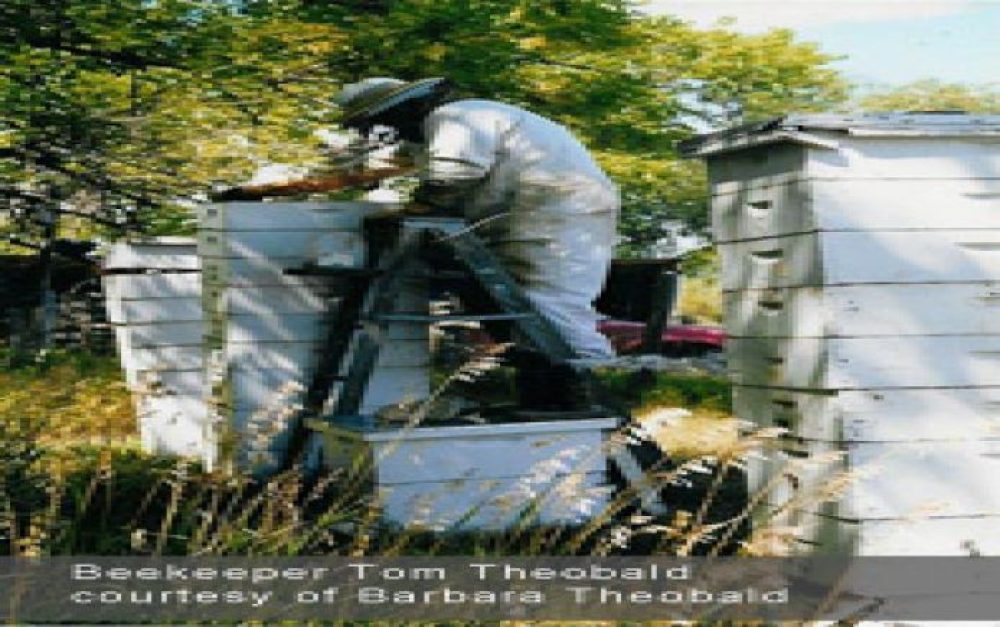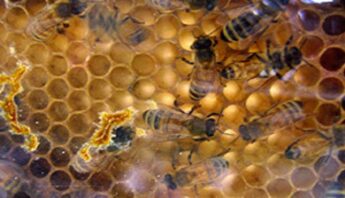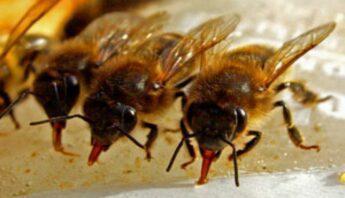On December 8, Pesticide Action Network and Beyond Pesticides joined beekeepers from around the country in calling on EPA to pull a neonicotinoid pesticide linked with Colony Collapse Disorder (CCD) off the market immediately. Our call is based on a leaked EPA memo that discloses a critically flawed scientific study, thus suggesting there may be imminent hazards to honeybees posed by continued use of clothianidin, the pesticide in question.
CCD is the name given to the mysterious decline of honeybee populations across the world beginning around 2006. Each winter since, one-third of the U.S. honeybee population has died off or disappeared. CCD is likely caused by a combination of pathogens, the stresses of industrial beekeeping, loss of habitat and more. But many scientists believe that sublethal pesticide exposures are a critical co-factor potentiating this mix. In the U.S., agencies are focused on research, trying to quantify these risks. In Germany, Italy and France, they decided they knew enough to take action years ago, banning suspect neonicotinoid pesticides. Bee colonies there are recovering and beekeepers here are outraged.
Several issues are at play: poorly conducted science, a broken regulatory system that puts chemicals on the market before testing them, lack of transparency and, most critically, the survival of honeybees and commercial beekeepers.
Beekeepers
Reflecting on the one-third loss of bees each winter, 50-year beekeeper, David Hackenberg, says: "Beekeepers are a stubborn, industrious bunch. We split hives, rebound as much as we can each summer, and then just take it on the chin – eat our losses. So even these big loss numbers understate the problem. What folks need to understand is that the beekeeping industry, which is responsible for a third of the food we all eat, is at a critical threshold for economic reasons and reasons to do with bee population dynamics. Our bees are living for 30 days instead of 42, nursing bees are having to forage because there aren’t enough foragers and at a certain point a colony just doesn’t have the critical mass to keep going. The bees are at that point, and we are at that point. We are losing our livelihoods at a time when there just isn’t other work. Another winter of ‘more studies are needed’ so Bayer can keep their blockbuster products on the market and EPA can avoid a difficult decision, is unacceptable.”
It is clothianidin Hackenberg is referring to, one of Bayer Crop Science's top-selling pesticides, and the controversy surrounding its conditional registration. According to the leaked EPA memo, clothianidin's registration is based on a flawed field study that was subsequently downgraded to an EPA-speak "supplemental" category that amounts to "interesting, but not enough to base a decision on." Clothianidin (product name “Poncho”) has been widely used as a seed treatment on many of the country’s major crops for eight growing seasons under a “conditional registration” granted in 2003 while EPA waited for Bayer to conduct the field study assessing the insecticide’s toxicity to bees — the study that now appears to be too flawed to rely upon.
"In an apparent rush to get products to the market," 35-year beekeeper Tom Theobald notes, "chemicals have been routinely granted 'conditional' registrations. Of 94 pesticide active ingredients released since 1997, 70% have been given conditional registrations, with unanswered questions of unknown magnitude. In the case of clothianidin those questions were huge."
Rushing to market: "conditional" registrations
EPA is supposed to license ("register") pesticides only if they meet standards for protection of the environment and human health. But pesticide law allows EPA to waive these requirements and grant a "conditional" registration of a new pesticide when health and safety data are lacking. In other words, this loophole allows companies to sell a pesticide before EPA gets safety data.
It is a common practice for the EPA’s Office of Pesticide Programs (OPP) to afford rapid market access for products that then remain in use for many years before they are tested. According to the Natural Resources Defense Council, of the 16,000 current product registrations:
- 11,000 (68%) have been conditionally registered;
- almost 8,200 products have been conditionally registered (“CR status”) since 2005;
- approximately 5,400 products have had CR status since 2000; and
- over 2,100 products have had CR status since 1990.
Our letter to the Agency addresses conditional registrations as a systemic failure:
… because this problem reflects an overuse of the conditional registration program in OPP, we urge you to set an immediate moratorium on the use of such registrations until the program is fully evaluated for compliance with its underlying statutory responsibilities. The conditional registration of clothianidin in 2003 with outstanding data critical to its safety assessment represents a failure that could and should have been avoided.
Honeybee toxicity
Clothianidin is of the neonicotinoid family of pesticides. They are designed as systemics, to be taken up by a plant’s vascular system and expressed through pollen, nectar and guttation droplets from which bees then forage and drink. Scientists are concerned about the combined and cumulative effects of the multiple pesticides bees are exposed to in these ways. Neonicotinoids are of particular concern because they have cumulative, sublethal effects on insect pollinators that correspond to CCD symptoms – namely, neurobehavioral and immune system disruptions.
According to Dr. James Frazier, professor of entomology at Penn State’s College of Agricultural Sciences, "Among the neonicotinoids, clothianidin is among those most toxic for honey bees; and this combined with its systemic movement in plants has produced a troubling mix of scientific results pointing to its potential risk for honey bees through current agricultural practices. Our own research indicates that systemic pesticides occur in pollen and nectar in much greater quantities than has been previously thought, and that interactions among pesticides occurs often and should be of wide concern." Professor Frazier said that the most prudent course of action would be to take the pesticide off the market while the flawed study is being redone.
With a soil half-life of many years in heavy soils, and more than a year in the lightest of soils, commercial beekeepers are concerned that even an immediate ban of clothianidin won’t save their livelihoods or hives in time.
For more detailed background, a copy of the memo and timeline of clothianidin's registration process, see our press release; for a good read, see Tom Philpott's in-depth coverage on Grist. For opportunities to take action, stay tuned.







